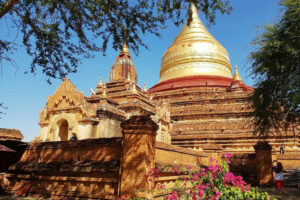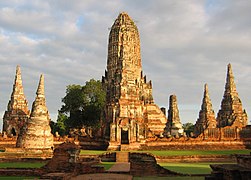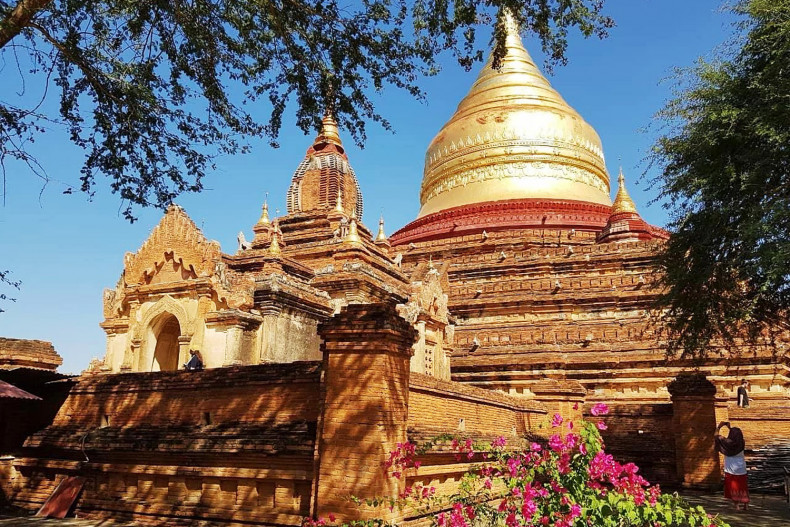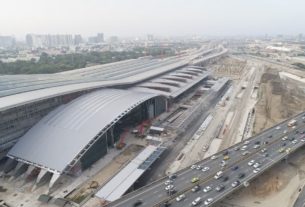
Less is more in restoring Asia’s past
For decades, restorations of Southeast Asia’s archaeological sites have typically involved transforming the past rather than faithfully presenting it. Conservationists often take a heavy-handed approach, embellishing a site to effectively “manufacture” a ruin that will appeal to visitors. But this tends to do more harm than good.
Unfortunately, enhancing ancient ruins has become the regional standard. Conservation projects build up the sites and fill in the gaps, whether this involves stone, laterite, brick, plaster or wood. The most architecturally iconic elements are especially likely to be fixed up to look complete and intact. Sometimes, structures are reconstructed from scratch. Instead of ensuring historical accuracy, officials favour creating a visually impressive experience that they hope will bolster tourism and business.
But this intervention deprives visitors of the opportunity to experience a true sense of the past. Instead of trying to captivate visitors with aesthetics, the focus should be on restoring a site carefully and accurately. This empowers visitors to understand the meaning of the place and history.
One example of excessive reconstruction is Myanmar’s Bagan, a magnificent capital developed between the 9th and 13th centuries and today an official Unesco World Heritage site. Yet the place we see now is quite different from what stood there in the past. The archaeological site was devastated by an earthquake in 1975. Then it was extensively rebuilt. From a touristic point of view, there is more to see today than before the quake. Entire temples were reconstructed to enhance the view but based on scant archaeological information. Bagan’s revamp effaced its ancient layout and context, which had been, by pre-modern standards, a highly urbanised social environment, not just monuments. Although reconstruction has significantly altered the historical accuracy of the site, few visitors are aware of this fact.
Makeovers
How did Bagan look and function in the past? How did people live there? This is nowhere to be found today. Instead, it has been replaced by a fantastical abstract landscape meant to entice the eye (and camera) rather than provoke an understanding of the past. Alas, Unesco validated this fabrication, inscribing Bagan as World Heritage in 2019. This probably did more harm than good for the rest of Myanmar’s built heritage, which continues to be “Baganised”.
Other regional archaeological sites have also suffered from distortions. In Indonesia, Hindu sanctuaries like Java’s 9th-century Prambanan Temple were substantially rebuilt. In Vietnam, sites like My Son, a Shaivite Hindu complex of temples and tombs built by the ancient Cham kingdom, rose again in the 1990s after wartime destruction and years of neglect. Sometimes, entire towers were reassembled; other times, smaller gestures involved simply reversing bricks to expose their better sides. Unfortunately, much of this work was based on conjecture and constructed inappropriately, often irreversibly, with incompatible materials. Unesco inscribed My Son as an official World Heritage Site in 1999, but the legacy of misguided reconstruction and faulty materials remain enormous challenges that today’s conservators must remedy.

Similarly, in Thailand, Wat Chaiwatthanaram, a key temple complex at the ancient capital of Ayutthaya, underwent significant reconstruction in the 1990s, beyond the reasonable minimum. Use of modern cement damaged the original structures because it replaced the original lime-based mortar with a more rigid material containing salts that cause deterioration. Various problems at Ayutthaya prompted Unesco, through an ICOMOS advisory mission, to warn that its status as a World Heritage site, awarded in 1991, was under watch, with a call to meet international standards.
Improving interpretation
Cambodia’s Angkor Wat, Southeast Asia’s most romanticised archaeological site, epitomises the ruined beauty of a lost world. Efforts to restore Angkor in the 1980s, after years of war, followed a heavy-handed approach like that of Bagan. Later, however, Angkor’s conservation work improved, showing greater discernment and curiosity on the part of Cambodia’s antiquities officials and their international counterparts. To be sure, some restoration has involved makeover efforts replacing stones and conjectural reconstruction. But the interpretation of Angkor has been evolving. Delving deeper into the site’s historical layers, conservationists are developing a broader knowledge of the people who built it and how they lived.
New technology is helping heritage researchers, sometimes revolutionising our understanding. At Angkor, lidar scanning, aka light detection and ranging, has been used to penetrate the dense jungle canopy. This has uncovered entire cities hidden beneath. Lidar has exposed not only additional temples but also the infrastructure of complete communities, including roads, footpaths, houses and rice paddies.
These discoveries highlight the sophistication and complexity of ancient Khmer society. Going beyond archaeologists’ traditional focus on religious structures and architectural achievements, today’s approach studies the daily lives of inhabitants. Digital technologies also offer new ways to share these insights. Video displays in exhibition halls, audio tours and site information apps are examples.
In Ayutthaya, too, conservation is getting better. Technicians are working to remove Wat Chai’s modern cement to preserve the site’s historical integrity. Equally important, the interpretation of the archaeology is improving. The Ayutthaya Gold Treasure Exhibition Building at the Chao Sam Phraya National Museum was recently remodelled. It now showcases a more progressive and effective way of presenting historical artefacts and sites to the public. It uses innovative lighting, engaging multimedia technology, and modern layouts to enhance the visitor experience and provide deeper insights into the royal associations of the artefacts and sites.
The exhibition complements the nearby Wat Ratcha Burana archaeological site, where so many of the glittering objects were found. Ayutthaya’s recent projects have been conducted by the Fine Arts Department, part of Thailand’s Ministry of Culture, and, at Wat Chai, in collaboration with World Monuments Fund, an international non-profit organisation.
Throughout Southeast Asia, conservationists and heritage officials need to look at how past reconstruction practices have harmed archaeology and our appreciation of it. We should correct excessive makeovers and return a sense of authenticity to ancient sites. Following international charters for preservation means dialling down the physical intervention to the minimum necessary. It creates less maintenance costs and ensures a more sustainable monument for future generations.
And it works best when we do a better job of presenting archaeology to the public. We should resist the old ways of fabricating better ruins and explain heritage less intrusively using quality texts, illustrations, models and digital technologies.
Jeff Allen is senior programme director for Southeast Asia at World Monuments Fund (WMF). Waraporn Suwatchotikul is project manager for the Wat Chaiwatthanaram Conservation Project and Burmese Farmhouse Documentation Programme at WMF. The Fund is a private, non-profit organisation founded in 1965 and dedicated to preserving historic architecture and cultural heritage sites worldwide. Heritage Matters is an opinion column presented by The Siam Society Under Royal Patronage to advocate conserving the architectural, cultural and natural heritage of Thailand and the neighbouring region. Each edition is by a different guest contributor. The views expressed are those of the author.
Source: https://www.bangkokpost.com/opinion/opinion/2839377/less-is-more-in-restoring-asias-past


